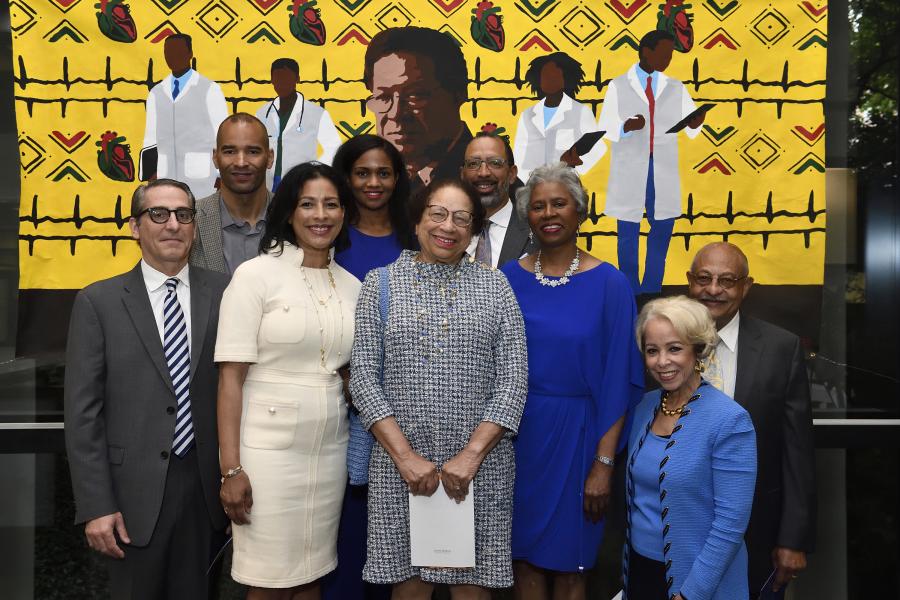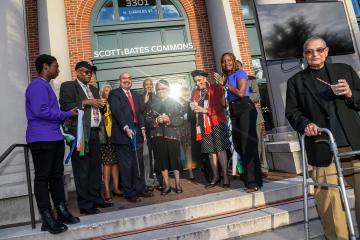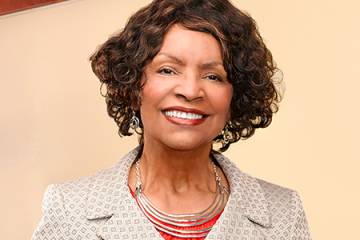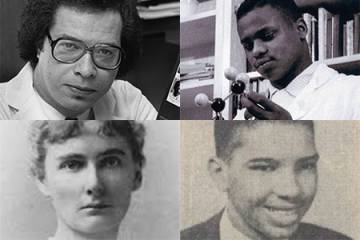- Name
- Johns Hopkins Media Relations
- jhunews@jhu.edu
- Office phone
- 443-997-9009
Johns Hopkins University and Medicine have paid tribute to trailblazing cardiac surgeon Levi Watkins—Johns Hopkins Medicine's first Black chief resident and full professor—by rededicating the Johns Hopkins Outpatient Center in his name.
Also see
A celebration of the newly renamed Levi Watkins Jr., M.D., Outpatient Center took place the evening of Thursday, June 8, when more than 150 people gathered mark the occasion. Beyond his groundbreaking work in cardiac surgery, Watkins is remembered for his pioneering mentorship and recruitment of underrepresented minorities in medicine.
The name change is part of the work of the Diverse Names and Narratives Project, an ongoing effort across the enterprise to more visibly honor and celebrate remarkable people from the institution's history, with a specific focus on those from historically marginalized and underrepresented groups.

Image credit: Will Kirk / Johns Hopkins University
Watkins joined Johns Hopkins Medicine in 1970 as a surgical intern and, after a research stint at Harvard Medical School, became Johns Hopkins Hospital's first Black chief resident in cardiac surgery. In 1980, Watkins performed the world's first implantation of an automatic heart defibrillator in a human, introducing a surgical procedure that would save the lives of countless patients experiencing a sudden interruption in the natural rhythm of their heartbeat.
As an associate dean and treasured mentor at the School of Medicine, he established the nation's first postdoctoral association, became a tireless advocate for fairness and diversity, and spearheaded a drive to recruit minority applicants. In 1982, he launched the annual Martin Luther King Jr. Commemoration, which annually attracts distinguished speakers and honors Johns Hopkins employees for their community service. A humanitarian and medical pioneer, Watkins worked to make Johns Hopkins more inclusive, innovative, welcoming, and connected to the community that surrounds it, making him an ideal namesake for a hospital endeavor that serves the Baltimore community.
Watkins died in April 2015 at age 70.
Video credit: Johns Hopkins video team
At the celebration, JHU President Ron Daniels spoke about how Watkins devoted himself to helping Black students, faculty, and residents thrive at Hopkins, ultimately making it a better place for everyone, including patients.
"He sought from the core of his being to make Hopkins a place where those who followed in his footsteps would have role models, not just in their mind or in their heart, but in the labs, the offices and hallways of this hospital and of this university," Daniels said. "Through all these efforts, year after year, Levi succeeded in changing the demography and the tenor of this place, making Hopkins more welcoming for all who came here, whether for work or for care. Naturally, Levi himself became a role model for generations of Hopkins students, and he made it possible, in turn, for these students to be role models for others as well."
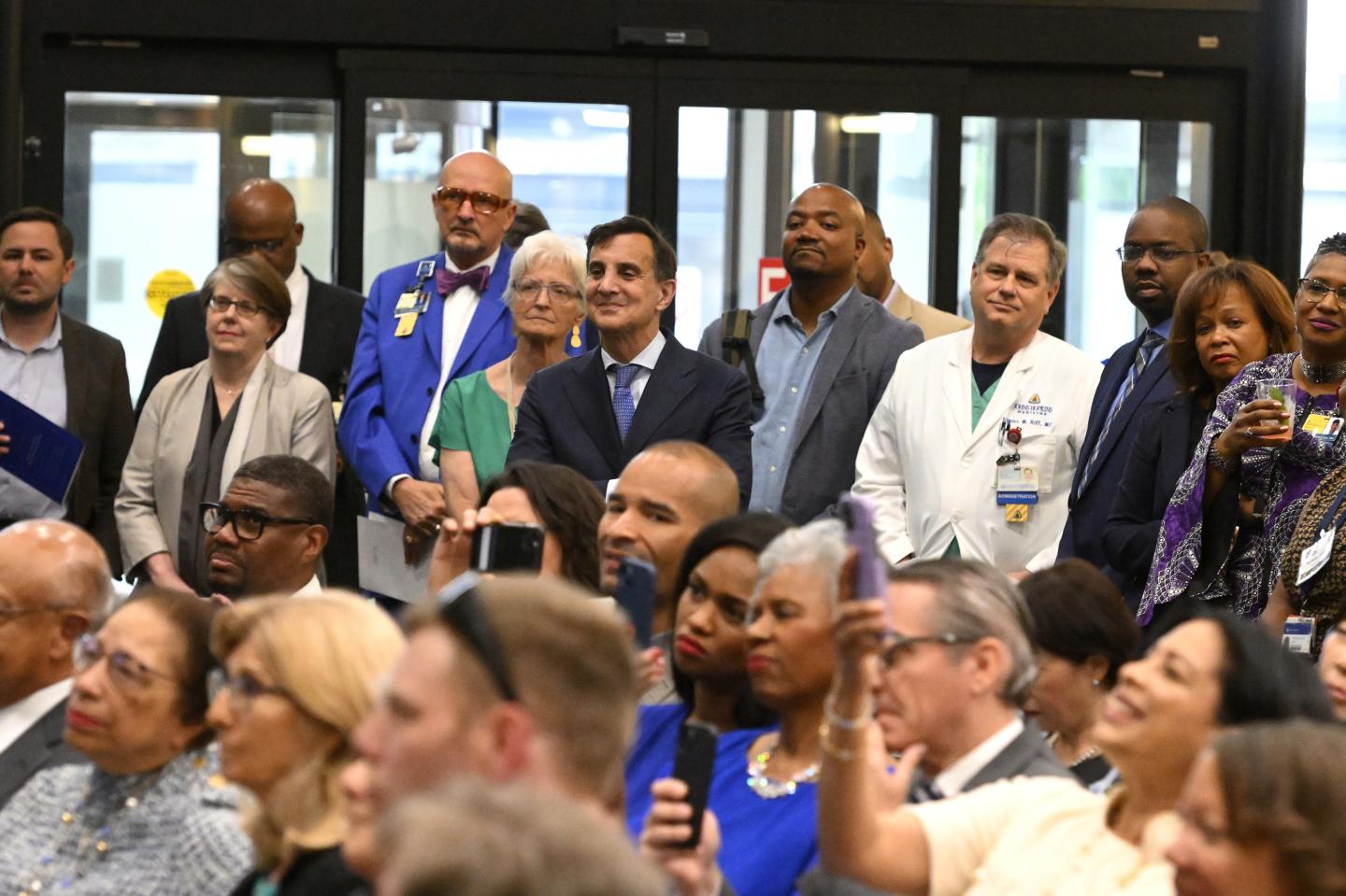
Image credit: Will Kirk / Johns Hopkins University
Among the attendees were many members of Watkins' family, including his sister, Annie Marie Garraway; his nephew, Levi A. Garraway; and numerous colleagues and friends, including Maria Heyssel, whose husband, Robert, was a former president of Johns Hopkins Hospital who was widely recognized as the chief architect of the institution's emergence as a diversified health care delivery enterprise; the building housing the Levi Watkins Jr., M.D., Outpatient Center was named for Robert Heyssel in 1992.
Damani Piggott, associate vice provost for graduate diversity and partnerships and an associate professor of medicine, recalled his first contact with Watkins came in the mail when he was an undergraduate at Morehouse College—Watkins had sent Piggott a letter as part of an ambitious personal outreach effort to recruit potential future medical students.
"It was an amazing personal touch and a full warm embrace to inspire, to nurture, and to support all pathways to medicine," Piggott said. "When we ultimately landed Hopkins as trainees, Dr. Watkins would be one of the first persons to welcome us and ensure that we all persistently and consistently knew that we had a genuine place here at Hopkins and in Baltimore at large."
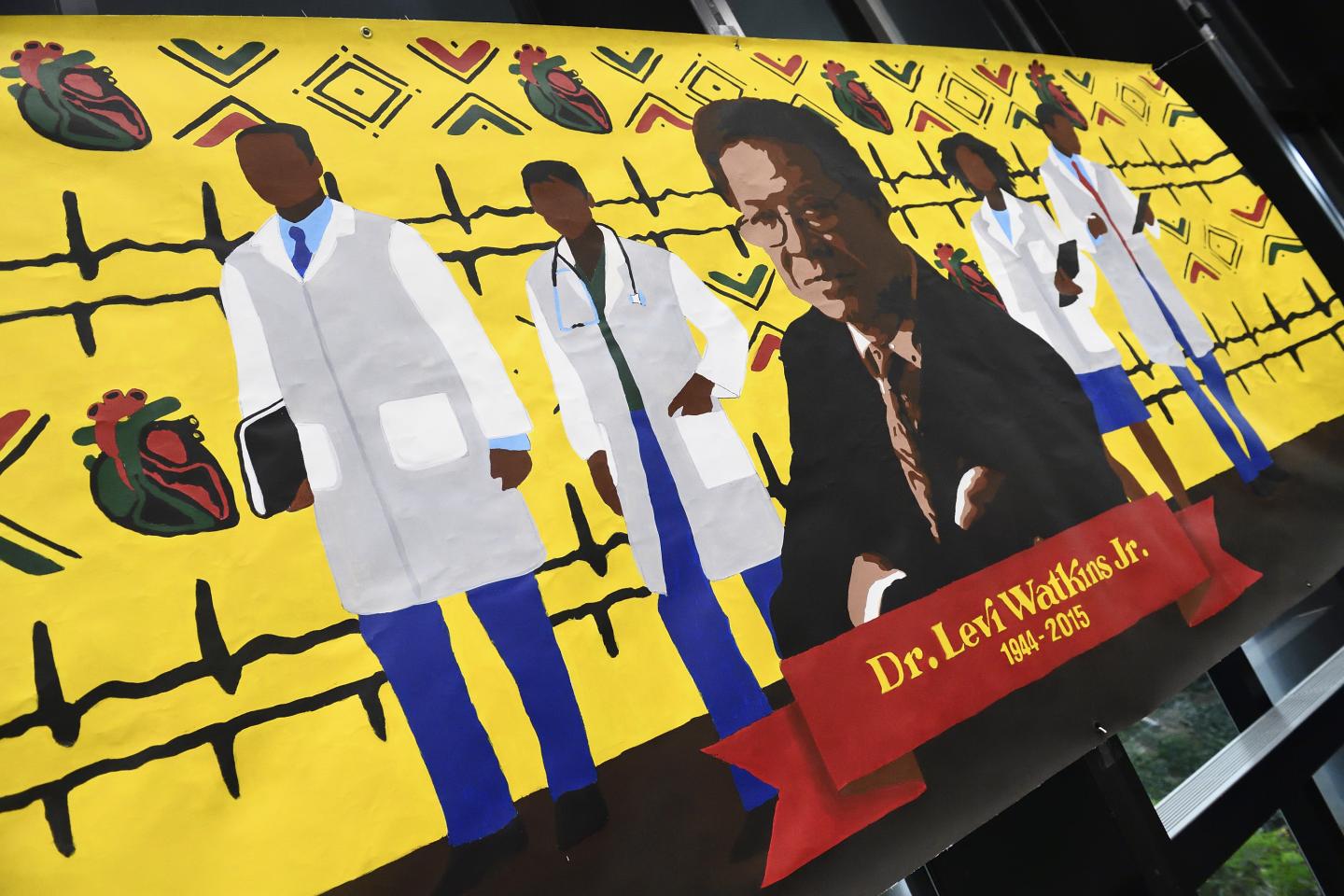
Image credit: Will Kirk / Johns Hopkins University
Posted in University News
Tagged johns hopkins hospital, diversity, levi watkins




